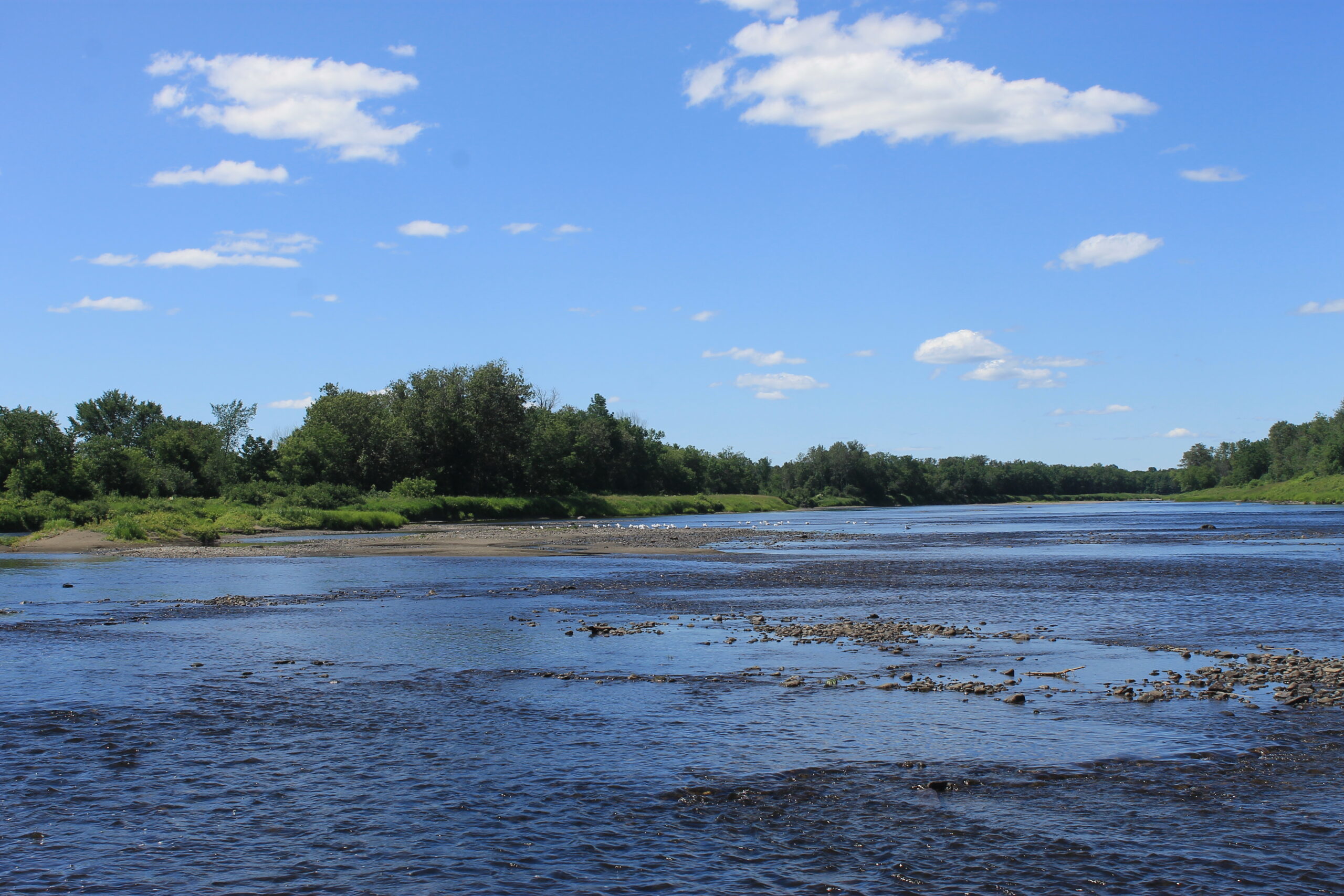
PRESQUE ISLE, Maine — This summer, Frank Kearney finds himself in a familiar routine, but one he’d rather not be in.
“We’re going into the dry time of the summer and you can tell by looking at the Aroostook River that it’s already low,” said Kearney, superintendent of the Presque Isle Utilities District.
The PIUD supplies drinking water to almost 6,000 people in Presque Isle from two river-fed wells drawing from a gravel aquifer that in turn is dependent on steady infiltration from the Aroostook River. In August of last year, during the height of a drought, Kearney was prepared to ask the PIUD’s customers to make voluntary cutbacks to water usage.
“I’m concerned earlier this year because it’s dry already,” Kearney said Wednesday. “For this time of year, it’s way below average.”
Each day, Kearney and other PIUD staff monitor the Aroostook River’s flow levels, via the National Weather Service’s Northeast River Forecasting Center.
On July 11, the river was flowing at 323 cubic feet per second, compared to the average for that date of more than 1,000 cubic feet per second, Kearney said. The record low for July 11 was 176 cubic feet per second in 1991.

Presque Isle Utilities District Manager Frank Kearney checks on the Aroostook River’s flow levels multiple times a day. The Aroostook River feeds gravel aquifers that supply drinking water to almost 6,000 people, and as of July, the river’s flow is less than half of the average for this time of year.
(Anthony Brino)
Aroostook County’s farms and gardens also could use rain, although Kearney, a former potato farmer, said that the area’s potato crops are so far looking excellent despite the recent dry spell and colder start to the growing season.
According to the U.S. Drought Monitor as of July 3, southern Maine and parts of western Maine were in a state of moderate drought, while portions of central and western Maine were considered abnormally dry. Northern and Down East Maine were not considered to be either, although according to the National Weather Service, northern Maine ended the month of June with slightly below-average precipitation.
For July, the outlook from the National Weather Service’s Climate Prediction Center forecast an increased likelihood of below-average rainfall and above-average temperatures.
Kearney said the low river levels this early in the driest parts of the year have him worried.
“It’s happening sooner than it did last year. I don’t know how much worse it can get than last year. We don’t want to panic quite so much, but we’re seeing the effect of the low river for sure.”
The PIUD has never had to ask its customers to take water conservation measures, but that always remains an option, Kearney said.
The PIUD started using the river-fed wells in 2005, after decades of using surface water — an unreliable source of clean drinking water — from the Presque Isle Stream.
The river-fed wells have been successful overall, but they are more subject to the river’s influence than engineers believed at the time, Kearney said.
The Caribou Utilities District also has river-fed wells, but they are set further back from the river and have better geologic conditions that make them much less exposed to low river levels, said Caribou Utilities District manager Hugh Kirkpatrick.
Kearney said the PIUD has begun an effort to add another well as an alternative source of drinking water to supplement the current wells.
“It would add some supply security,” he said.
Many water utilities in Maine have similar river-fed wells for drinking water, aside from the larger lakes that can supply a consistent clean water supply, Kearney said. Traditional groundwater wells are often insufficient for public drinking water supplies because they can contain metals such as arsenic and aren’t capable of drawing the large quantities needed for a public utility.
“A real good household well might yield five gallons a minute.” The PIUD pumps 600 gallons per minute to meet an average need of 1 million gallons a day, Kearney said.
The PIUD is in the early stages of the effort to add another well and is in discussions with a landowner.
“Developing a well can take at least two years and it would cost, my guess, $1 million easy,” Kearney said.
“I think we’ve got a better than 50-50 chance of getting a usable amount of water and all the water along the Aroostook River is good quality.”







